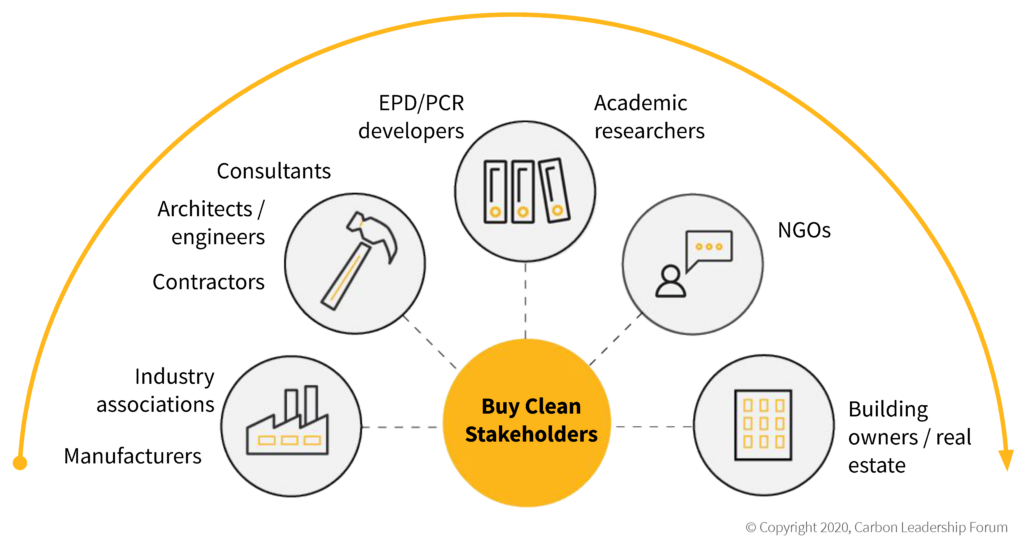This document aims to provide an overview of key stakeholders and strategies for addressing the implementation challenges related to Buy Clean policy.
Buy Clean is a procurement policy approach that aims to fill a current gap in climate policy by incorporating low-carbon construction purchasing requirements that address the greenhouse gas emissions from the supply chain and manufacturing of construction materials.
Version: December 17, 2020
Successful implementation strategies
Buy Clean policies vary depending on their geographic and political context, but all are procurement policies that (at a minimum) require embodied carbon disclosure on building materials. To learn more about Buy Clean policies, check out What is a Buy Clean Policy?
Table 1 below summarizes the perceived costs and challenges of Buy Clean, as well as strategies for mitigating them.
 High-level strategies
High-level strategies 
for successful Buy Clean implementation
- Start simple with a short list of high-impact materials.
- Engage stakeholders early and often (see Figure 1).
- Align with existing frameworks and tools to reduce training requirements and administrative burdens on manufacturers and project teams.
- Phase in the policy over time (see Figure 2).
- Provide education and training directly or through partnerships with other organizations.

